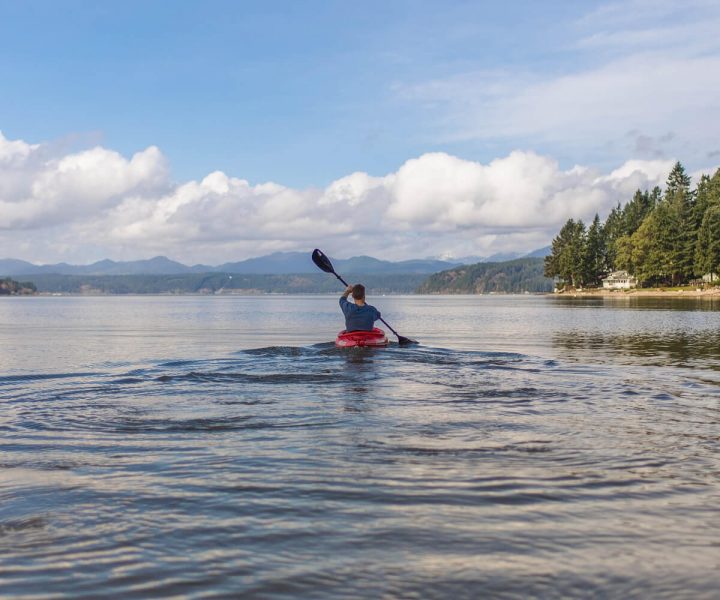
After finding the right kayak, the next step is choosing a kayak paddle. There are kayak paddles designed for all sorts of kayak adventures, from whitewater kayaking to placid lake water kayaking.
Most likely, your paddle will be in your hands the whole time you’re out in the water, so it’s critical that you choose wisely. A properly fitting paddle for you and your style can mean the difference between a rewarding and fun day or a frustrating experience that ends with sore shoulders and hands.
Paddle length
The basic rule when it comes to paddle length is that the broader your kayak, the longer your paddle. Another factor that comes into play is your height, as taller paddlers require a longer paddle. That is why manufacturers create different sized paddles taking into consideration those two factors. There are standard guides for paddler height and boat width, but we recommend checking your preferred brand’s website, as there can be a slight variation.
Paddle materials
There are two parts of the paddle: the blade and the shaft, and they are both made of various materials.
Blade
The more lightweight your paddle, the better your performance will be, so if you can afford it, a lighter blade will pay off by lessening your fatigue.
Nylon/Plastic: This is the preferred choice for recreational kayakers, as its less expensive than other materials while still being durable. Nonetheless, you should take into consideration that its flexibility can sacrifice efficiency when it comes to your stroke.
Fiberglass: More expensive than plastic but cheaper than fiberglass, they offer fantastic durability and performance. Their rigidness will make them very efficient while out on the water.
Carbon-Fiber: If you have the budget for carbon-fiber, this is the best blade material on the market. Along with being super lightweight, the stiffness means the energy is efficiently transferred with each stroke.
Shaft
Most shafts are made out of aluminum, and it’s the most budget-friendly option. While durable, the downside is that aluminum can get very hot or cold depending on the weather, so its best to use gloves if kayaking in extreme temperatures.
Shafts made out of fiberglass or carbon are lightweight, strong, and durable. For more experienced or competitive paddlers, pairing a shaft and blades made out of these materials will give them the most efficient and lightweight paddle option, and significantly increase their performance.
Paddling type
You also need to take into consideration your preferred kayak outing, whether it be a river or lake, sea kayaking or whitewater rafting.
Rivers and lakes
If most of your time will be extended day trips spent paddling on slow-moving rivers or lakes, then your best bet is a touring kayak paddle. They are a fantastic option for exploring, river running, and day tripping. Look for a plastic blade if you are more likely to paddle in shallow water, as it will be more durable even if it hits rocks, sand, and gravel.
On the other hand, if you won’t be in the water for extended periods of time, consider a recreational kayak paddle, which is perfect for shore exploration, exercise, fishing, and short trips.
Sea touring
For sea touring, it’s best to choose a stiff carbon paddle that will be responsive and efficient. Since its more lightweight, you can paddle for longer without feeling fatigued. Even though paddles are not duck poles, choose a paddle with plastic or nylon blades if you find yourself often pushing off sand, gravel, or rock.
Whitewater kayaking
Your paddle should be strong and durable, as it will be taking some hard knocks. For rougher conditions, think about selecting a shorter paddle, which will give you more control.
 Your Privacy Choices
Your Privacy Choices
 The
The